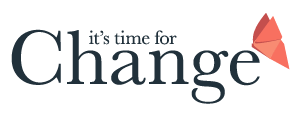After Action Review
How often do we review our practice? When we hit ‘pause’ and ask the right questions, we are able to highlight strengths, find out what can be done differently next time to make the experience more positive, to make it easier to engage and perform, and ultimately to increase future success.
That’s exactly what we did recently at Smedley Group when I was asked to facilitate an After Action Review (AAR). Rob Smedley has high standards, having come from Formula 1, and understands that failure is part of development and we just need to make sure we fail fast. That means talking about what has not gone well and hearing from the workforce ideas to make things better.
“If you aim to be the best then it’s essential to evolve constantly, learn from past mistakes, look for new opportunities and have the flexibility to implement improved processes and solutions along the way.”
– Mark Gallagher, Formula 1
These sessions are always so inspiring – the solutions to the problems are in the room!
Teamwork, Leadership and Innovation in Formula One
Research by Mark Jenkins, Professor of Business Strategy and Director of Community for Strategy, People & Leadership at Cranfield School of Management, highlights useful insights:
- people spend a lot of time talking about what mistakes they made.
- Even in the post-race celebrations on a winning day, teams focus more on what they did wrong than what they did right.
- That’s what helps them refine, refine, refine fabulous machines – staying that critical step ahead of the competition.
- This means that it’s okay to admit you got it wrong; that you could have done better, and that you will learn from it.
If this approach is good enough for Formula 1, it is good enough for others. Yet, many organisations hold onto the need to cover your back, find who’s to blame and criticize rather than learn. That is a natural response unless time is invested into creating the right culture that embraces psychological safety and positive conflict. That positive culture is one that many leaders aspire to create, but knowing how and being able to achieve that when you are wrapped up in the current work challenges, is a very different story.
So, I supported the team on a journey that started with exploring why talking about what went wrong or could have been better is so hard. We spent some time exploring the impact of fear on our thoughts and behaviours, and how we show up at work, often hiding a myriad of concerns behind the facade.
We also dipped into the subject of conflict, and how we respond to difference of opinion. It is so important to explore what individuals need for disagreements to feel ok for an AAR to work well. If people are feeling threatened, judged, or blamed, the increase in emotional arousal shuts down any ability to be open-minded and innovative.
Key Questions
The amount of helpful information that came from questions such as:
- What did you set out to achieve?
- What was supposed to happen?
- What actually happened?
- Why was there a difference?
- What worked well and why?
- What didn’t work well and why?
- What can we improve upon and how?
Listen to what Rob has to say about his journey, his purpose and this AAR process in the Beyond the Water Cooler Podcast HERE.
As with most of what I do, it’s not rocket science! But, having someone objective and neutral to facilitate this process really helps. Before waiting for the numerous insights and recommendations that I have pulled together for the team to use to plan their next project, they have already seen what positive changes they can make going forward. So that puts Smedley Group onto the right trajectory to go from strength to strength. Watch this space…
If you would like to explore the benefits of AAR, drop me a line.




